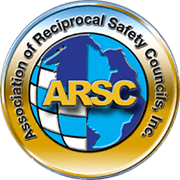By David Womack, Ph.D.
Safety and Health Manager, HSEQ & ARSC Owners Advisory Committee Co-Chair
Most of us know the components of a good safety and health management system. For example, see Safety and Health Program Management Guidelines, (Federal Register 54(18):3908–3916, January 26, 1989). What many of us may not realize is that several of these components are linked.
The base component of a good safety and health management system is a set of standard operating procedures (SOPs). SOPs streamline, optimize and reduce risk of error of day-to-day activities.
So how do we ensure that our SOPs include the necessary safety mitigations? We use another tool in our management system called a Job Hazard Analysis (JHA). With this tool we break down the activities in the SOP into discrete steps. We then identify the potential hazards in each step. Each step can have several potential hazards. We then list mitigations for each hazard that can remove or significantly reduce the risks. These mitigations are then built into our SOP.
JHAs can be developed for tasks that do not have an SOP. In this case they become operating instructions with the potential hazards and mitigations listed for each step.
SOPs and JHAs need to be routinely revalidated to ensure they are up-to-date and represent how the activities are actually carried out in the field. Another tool in our management system works well to assist in this revalidation - the Safety Observation program. As safety observations are performed, the SOPS and JHAs should be reviewed to visually check that the steps are followed, and that the mitigation is in place. New hazards may be identified and added to the JHAs/SOPs along with their mitigation. Safety observations can also be used to develop new JHAs.
As described above the SOPs, JHAs and safety observations are linked in our safety and health management system. Each component adds value by itself but multiplies its value when used with the other components.
